Progress books for children
by Jason Crawford · November 10, 2025 · 3 min read
Progress isn’t taught in schools, and students today graduate without “industrial literacy”: a basic understanding of and appreciation for the system that built and maintains our historically unprecedented standard of living. What can parents do today to help their children be industrially literate?
In “The Progress Agenda,” I mentioned children’s books. One in particular caught people’s attention: You Will Go to the Moon, from 1959 (h/t Virginia Postrel via her blog).
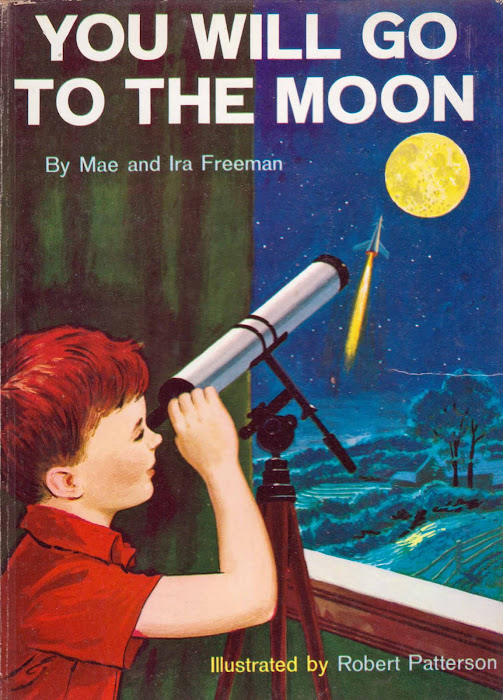
I’ve now heard from a few people who are buying used copies for their kids. Snag yours for Christmas before they’re all gone.
Here are a few more progress-related books I know of—some old and out of print, some quite recent; some I’ve read and can recommend, some I’m just intrigued by.
Subscribe to get posts by email, or upgrade to paid to support my work:
Up Goes the Skyscraper!
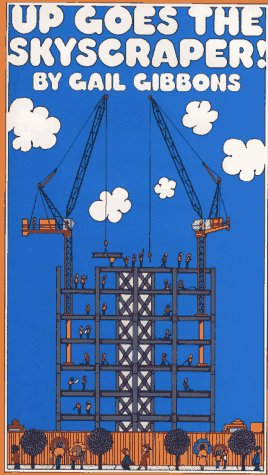
This one opens with a clear statement of human needs: “Thousands of people want to work and live on the empty city block. It is a small space for so many people. A skyscraper must be built.” And it concludes by saying “Look up at the skyscraper … it is beautiful.”
It goes through many details—I skip the smaller print for my 4-year-old. She loved learning about I-beams and H-beams, however, and she wondered why there were no G-beams or J-beams. (H/t Luca Gattoni-Celli for this one.)
Evidently there is an updated version of this book (I haven’t seen it yet), and it is only one of dozens of “Explore the World” books by the same author, including How a House is Built, Tool Book. and From Seed to Plant. I think my daughter will get some of these for Christmas.
John Deere, That’s Who!

The story of the invention of the polished steel plow. This is a story of industriousness and resilience: Deere is a hardworking blacksmith who has to find a new home after his workshop burns down. It’s also a story of inventiveness: when the farmers in his new town are having trouble plowing through the thick, sticky mud in their fields, Deere creates a slick, lightweight plow out of polished steel. (H/t Gregory Salmieri.)
Magic Ramen: The Story of Momofuku Ando

The invention of instant ramen might seem an unlikely topic, but it’s actually a very well-told story that draws out the problem-solving process (in the way that Anton Howes talked about here).
Ando has a clear goal of creating a ready meal that people could make easily and quickly. He has to solve one problem after another, and he does it by tinkering and experimenting. First he has to find a good recipe for noodles that don’t stick or fall apart; then he has to figure out how to get the soup flavor into the noodles; and finally he has to figure out how to make it cook in just a few minutes using boiling water from a kettle, instead of cooking for several minutes on a stove. At each stage he doesn’t know what to do and tries many things that don’t work before finally hitting on the solution. A story of vision, drive and persistence, made tangible and real. (I confess to editorializing a bit by inserting at each stage, “and he was very frustrated, but he didn’t give up. He kept trying.”)
Working Boats: An Inside Look at Ten Amazing Watercraft
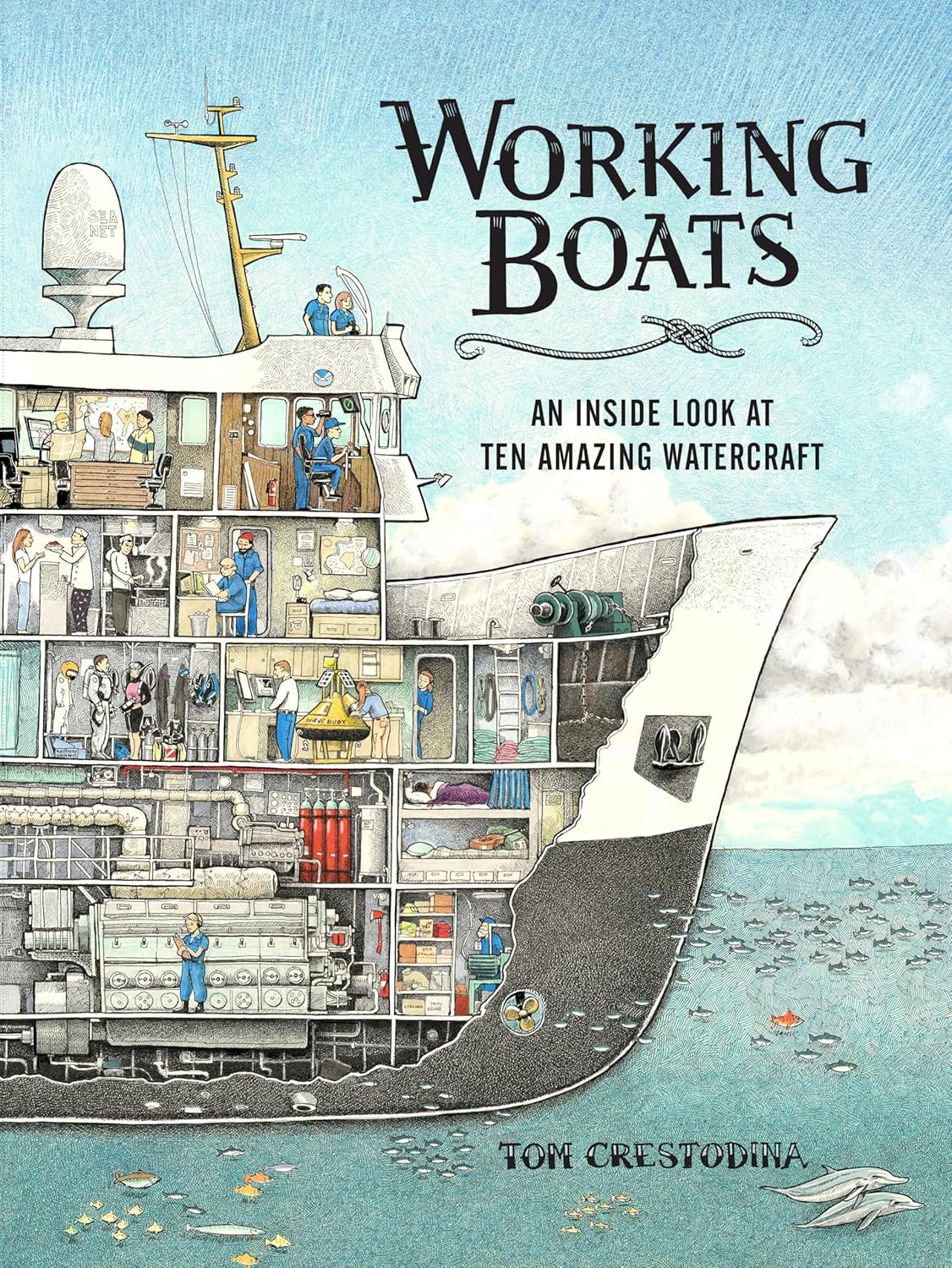
This one is beautifully illustrated and does not skimp on the detail. I didn’t realize there were so many specialized boats, seemingly one for every species of seafood, as well as tugboats, fire boats, and more. (H/t Katherine Boyle via Twitter.)
Note for parents: most of the books above are probably best for ~6- to 7-year-olds, but I was able to adapt them for my daughter when she was only 3 or 4 by simplifying the language and explaining some of the background concepts.
Le Livre des Progrès

This one is in French and I don’t know if there’s an English translation, but it’s so remarkable I had to mention it. It’s literally titled “The Book of Progress,” and every page shows how we used to do things, and how we do them now.
Here’s a sample page, headlined “From the plow to the tractor.” The page opposite is about construction machines:
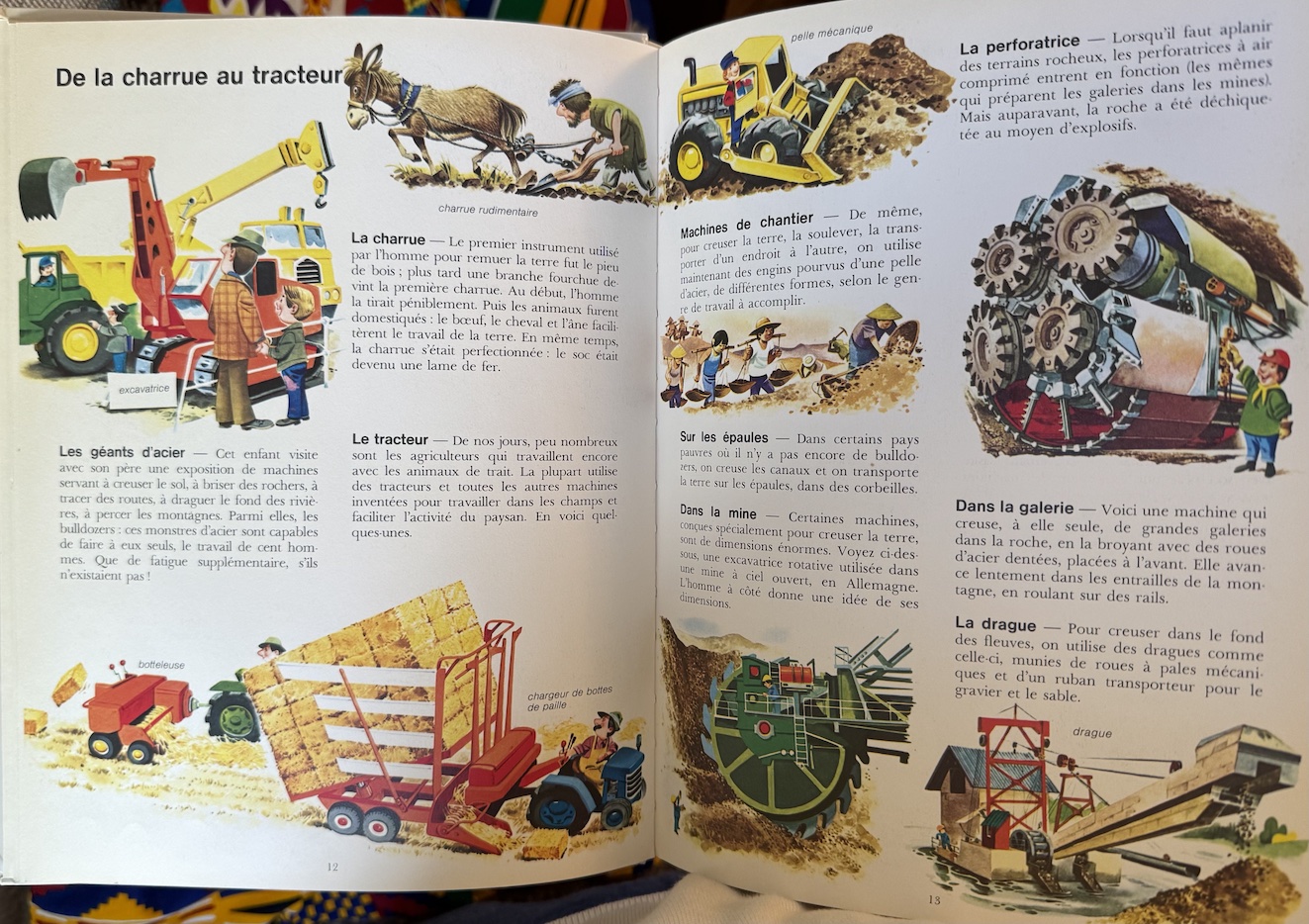
Here’s another sample page, “From the broom to the washing machine”:
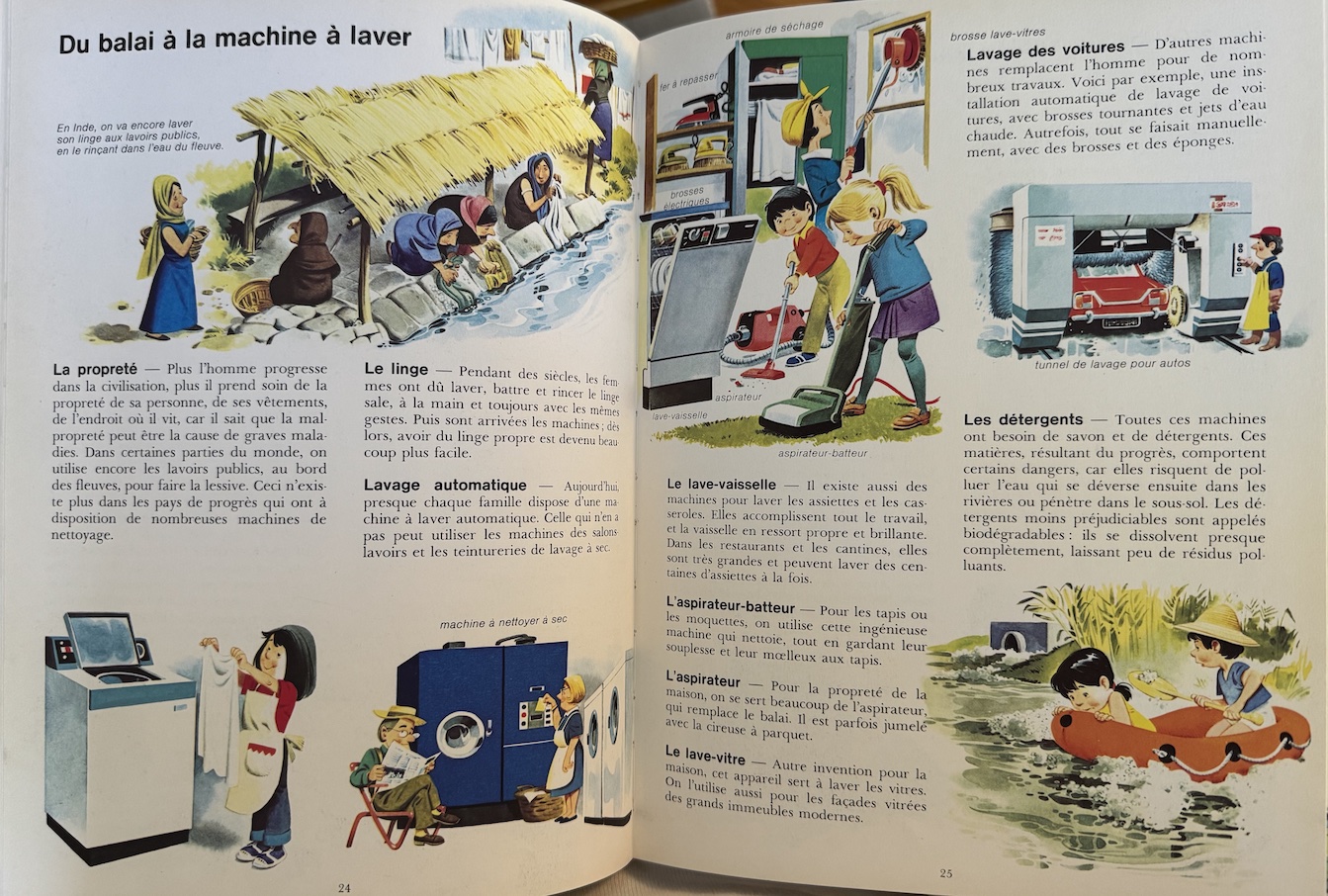
I’d love an English translation of this.
“We Were There”
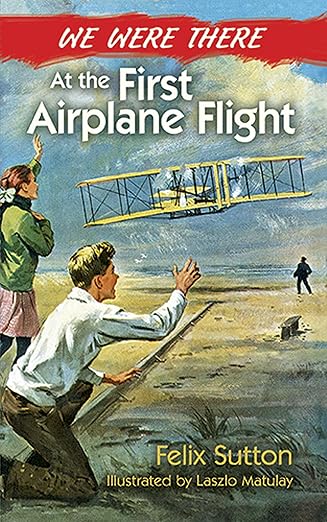
“We Were There” is a series of chapter books for older kids, written in the 1950s and ‘60s, basically historical fiction meant to teach history. The books include We Were There at the First Airplane Flight (pictured above), We Were There at the Driving of the Golden Spike (about the completion of the transcontinental railroad), and We Were There at the Opening of the Erie Canal. I haven’t read these yet to evaluate them.
Those are the most remarkable I’ve found so far. What else is out there? Please suggest more in the comments on Substack (ideally not just science explainers, of which there are plenty, but stories of invention or discovery, or explainers about industrial civilization and infrastructure).
